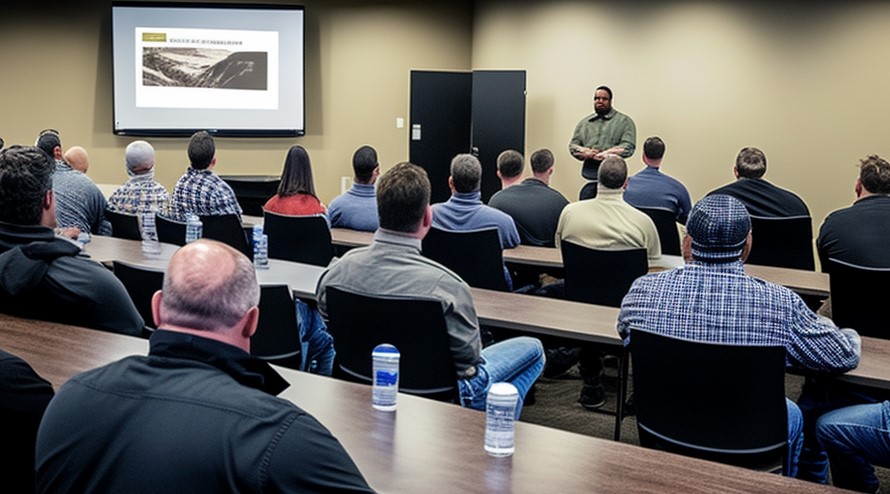Ultimate Guide to Work Comp for Assisted Living Facilities
The Importance of Workers’ Compensation in Assisted Living Facilities: Protecting Your Employees and Business

As the elderly population grows, the demand for assisted living facilities continues to increase. While these facilities provide valuable services to seniors and disabled individuals, they also come with unique risks to employees. Workers in assisted living facilities face a range of challenges, including exposure to hazardous materials, lifting and transferring residents, and managing challenging behaviors. To protect employees and the business, it’s essential for assisted living facilities to have a strong workers’ compensation program in place. In this article, we’ll explore the importance of workers’ compensation in assisted living facilities and provide guidance on how to develop an effective program.
What is Workers’ Compensation and Why is it Important?
Workers’ compensation is a type of insurance that provides benefits to employees who become ill or injured while on the job. These benefits may include coverage for medical expenses, lost wages, and disability compensation. The purpose of workers’ compensation is to protect both employees and employers by ensuring that workers receive the care they need while businesses are not bankrupted by the cost of workplace injuries.
In the context of assisted living facilities, workers’ compensation is particularly important due to the nature of the work. Employees may be exposed to infectious diseases, suffer from strains and sprains due to lifting and transferring residents, or experience violence from residents with challenging behaviors. An effective workers’ compensation program can provide employees with the resources they need to recover from injuries and return to work, while also protecting the business from costly legal action.
Developing a Workers’ Compensation Program for Assisted Living Facilities

To develop an effective workers’ compensation program, assisted living facilities should follow a few key steps:
Step 1: Identify Potential Risks
The first step in developing a workers’ compensation program is to identify potential risks. This can be done by reviewing incident reports, conducting a hazard assessment, and consulting with employees. Once risks are identified, a plan can be developed to mitigate or eliminate them.
Step 2: Communicate the Program to Employees
Assisted living facilities should communicate the workers’ compensation program to employees and ensure that they understand how to report injuries and what benefits they are entitled to. A clear and effective communication plan will help to ensure that employees feel supported and cared for in the event of an injury.
Step 3: Establish a Reporting and Investigation Process
Assisted living facilities should have a clear process in place for reporting and investigating workplace injuries. This process should include procedures for documenting the incident, providing medical care, and determining eligibility for benefits. An efficient reporting and investigation process can help to reduce the likelihood of disputes and improve the quality of care that employees receive.
Step 4: Provide Access to Medical Care
Employees who are injured on the job need access to medical care. Assisted living facilities should have a process in place for providing medical care and ensuring that employees receive the care they need. This may include partnering with local healthcare providers or developing an in-house healthcare team.
Step 5: Manage Claims and Return to Work
An effective workers’ compensation program includes a process for managing claims and facilitating the return to work of injured employees. This may involve modified duty, rehabilitation, or other accommodations to help employees recover and return to work. An effective return to work program can help to reduce the cost of workers’ compensation claims and improve employee morale.
Legal Considerations for Workers’ Compensation in Assisted Living Facilities

In addition to the steps outlined above, assisted living facilities should be aware of the legal considerations related to workers’ compensation. These can include:
State Requirements: Workers’ compensation requirements vary by state, and assisted living facilities should ensure that they are in compliance with local regulations. A qualified attorney can provide guidance on the legal requirements in a specific state.
OSHA Compliance: Assisted living facilities should comply with Occupational Safety and Health Administration (OSHA) regulations to minimize the risk of workplace injuries. OSHA is responsible for ensuring that employers provide safe and healthy work environments for their employees. Compliance with OSHA standards can help to prevent workplace injuries and protect the health of employees.
Employer Liability: Even with a workers’ compensation program in place, assisted living facilities can still face liability for workplace injuries. It’s important to have a comprehensive risk management program in place to minimize the risk of legal action. Risk management strategies may include safety training, regular safety inspections, and compliance with industry standards and regulations.
Frequently Asked Questions
Q: Who is eligible for workers’ compensation benefits?
A: In general, employees who are injured or become ill as a result of their job duties are eligible for workers’ compensation benefits. This includes full-time, part-time, and seasonal employees. Independent contractors are typically not eligible for workers’ compensation, as they are not considered employees.
Q: What types of injuries are covered by workers’ compensation?
A: Workers’ compensation covers injuries and illnesses that are related to an employee’s job duties. This can include injuries from accidents, such as falls or burns, as well as illnesses caused by exposure to hazardous materials or infectious diseases. Workers’ compensation also covers repetitive stress injuries, such as carpal tunnel syndrome, that develop over time due to job duties.
Q: How long do workers’ compensation benefits last?
A: The length of workers’ compensation benefits depends on the severity of the injury and the individual case. In general, benefits can last for as long as the employee is unable to work or until they have reached maximum medical improvement. In some cases, benefits may be available for life if the injury is severe and results in permanent disability.
Q: How are workers’ compensation benefits calculated?
A: The amount of workers’ compensation benefits an employee is entitled to depends on several factors, including the severity of the injury, the employee’s average weekly wage, and the state’s workers’ compensation laws. Benefits may include payment for medical expenses, lost wages, and disability compensation.
Q: Can an employee sue their employer for a workplace injury?
A: In general, employees who are covered by workers’ compensation insurance are prohibited from suing their employer for workplace injuries. However, there are some exceptions to this rule, such as cases involving intentional harm or gross negligence by the employer. In these cases, an employee may be able to file a lawsuit against their employer in addition to receiving workers’ compensation benefits.
Conclusion
In summary, workers’ compensation is an essential aspect of protecting employees and businesses in assisted living facilities. These facilities provide valuable services to seniors and disabled individuals, but they also come with unique risks to employees. An effective workers’ compensation program can help to ensure that employees receive the care they need while also protecting the business from costly legal action.
To develop a strong workers’ compensation program, assisted living facilities should follow the key steps outlined in this article, including identifying potential risks, communicating the program to employees, establishing a reporting and investigation process, providing access to medical care, and managing claims and return to work. Additionally, assisted living facilities should be aware of the legal considerations related to workers’ compensation and take steps to ensure compliance with state and federal regulations.
By taking a proactive approach to workers’ compensation, assisted living facilities can help to ensure the safety and well-being of their employees, while also protecting the business from legal and financial risks.
Take the first step in protecting your business and employees by calling our agency, WHINS Insurance, at 818-233-0833 to request a quote. Our team of experts is ready to help you develop a strong workers’ compensation program that is tailored to your specific needs and meets all state and federal regulations.
